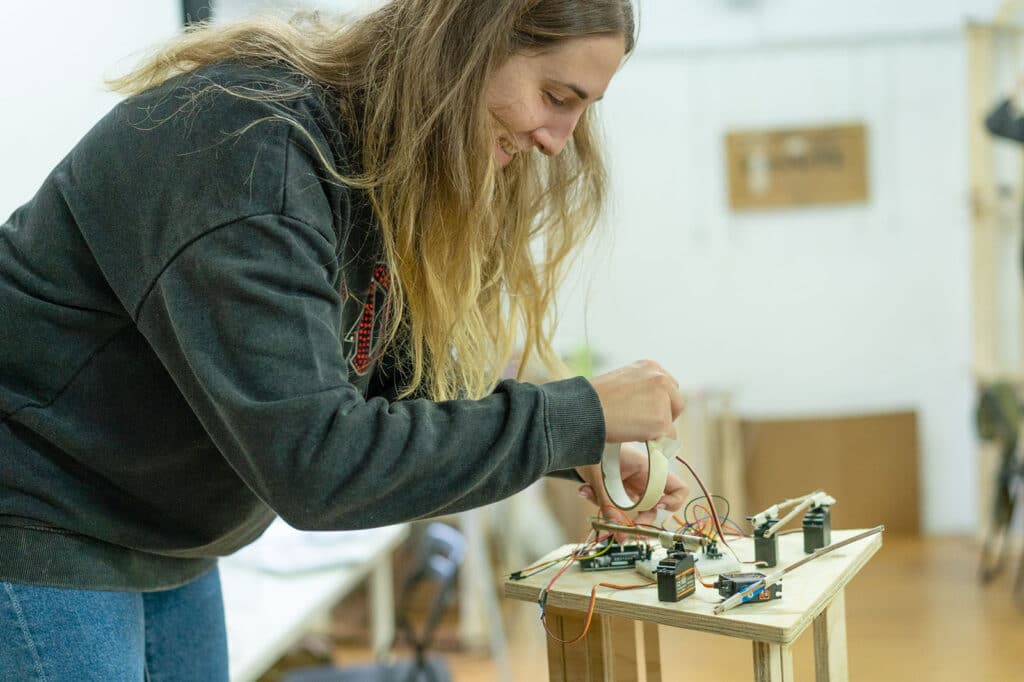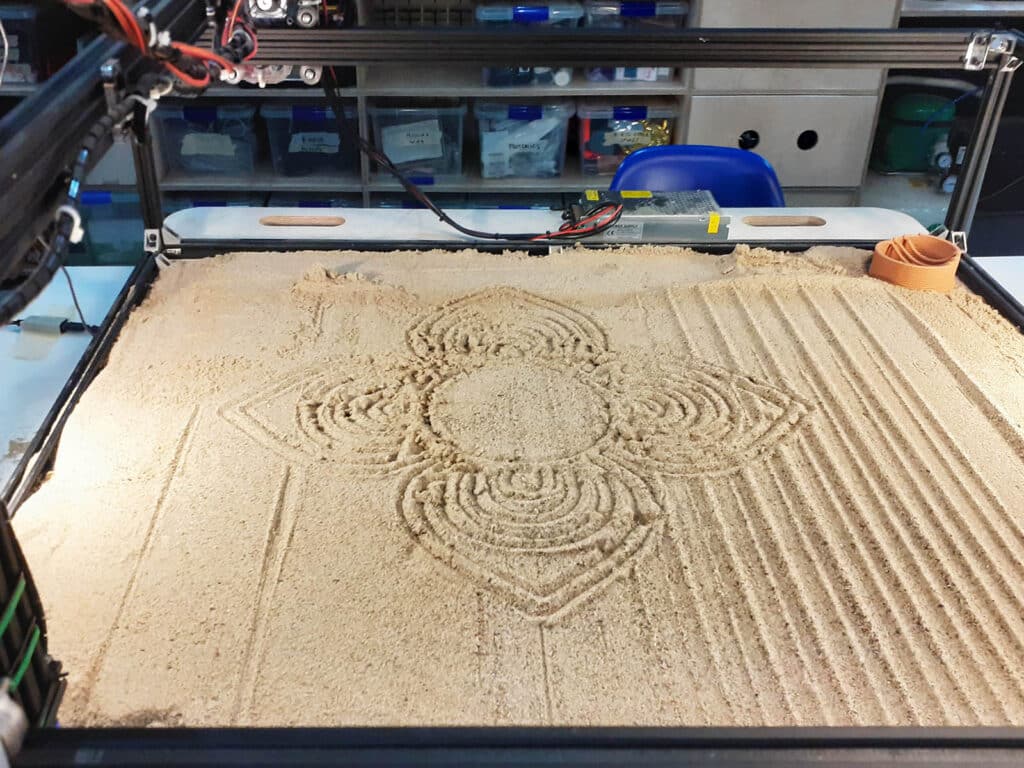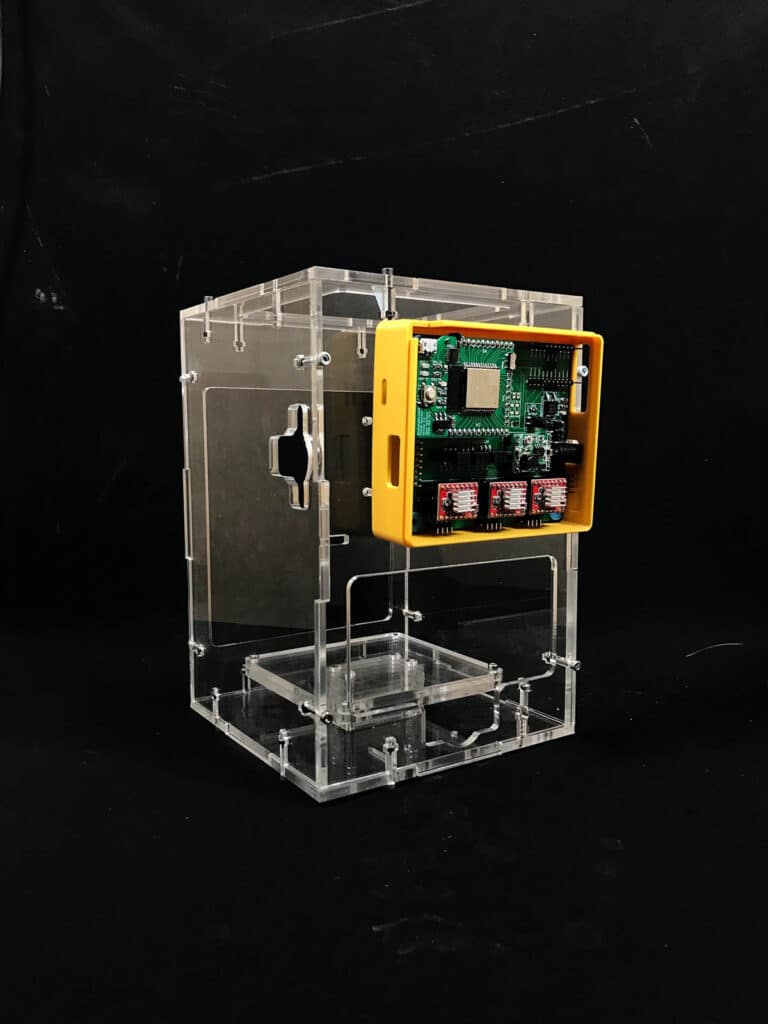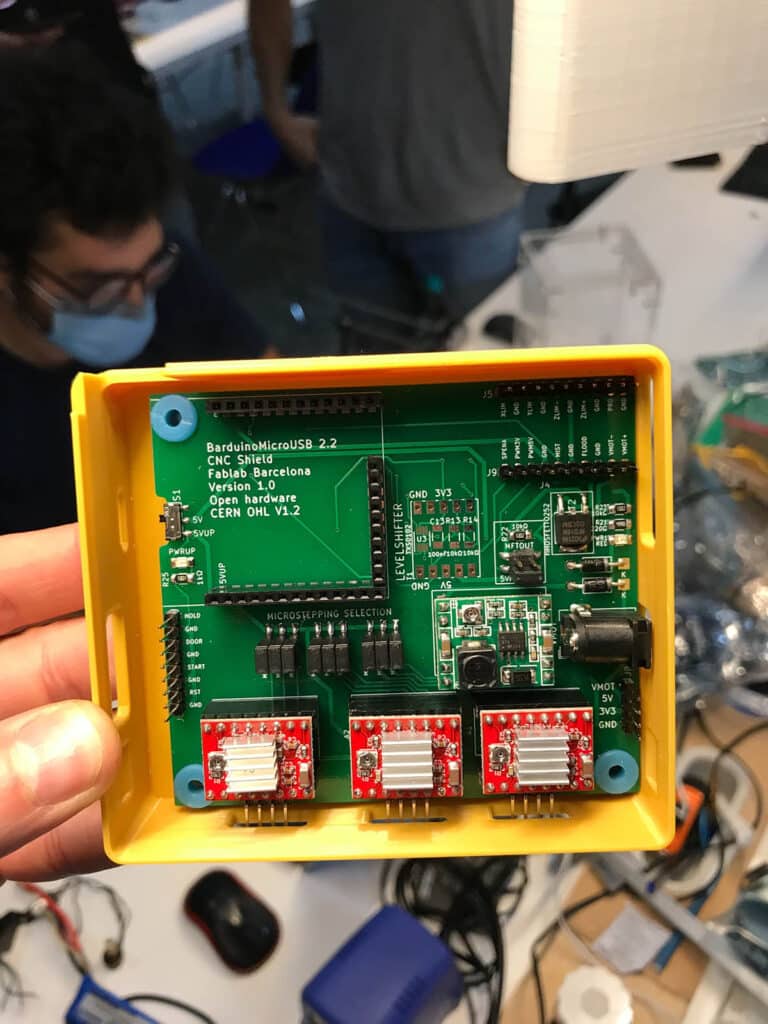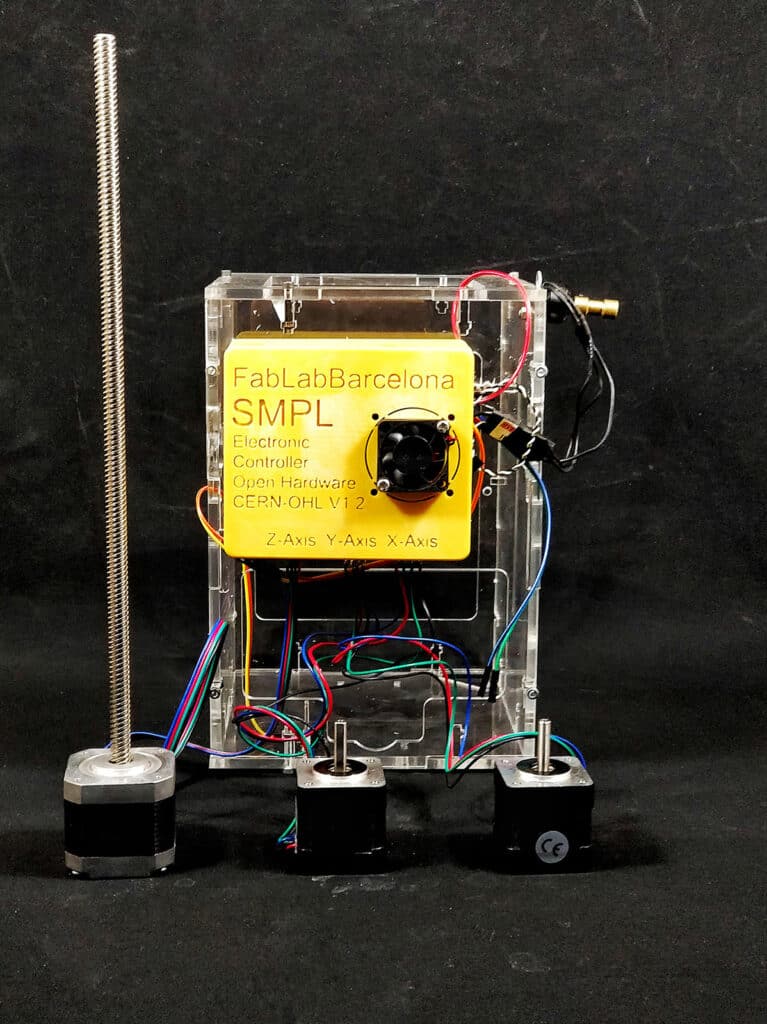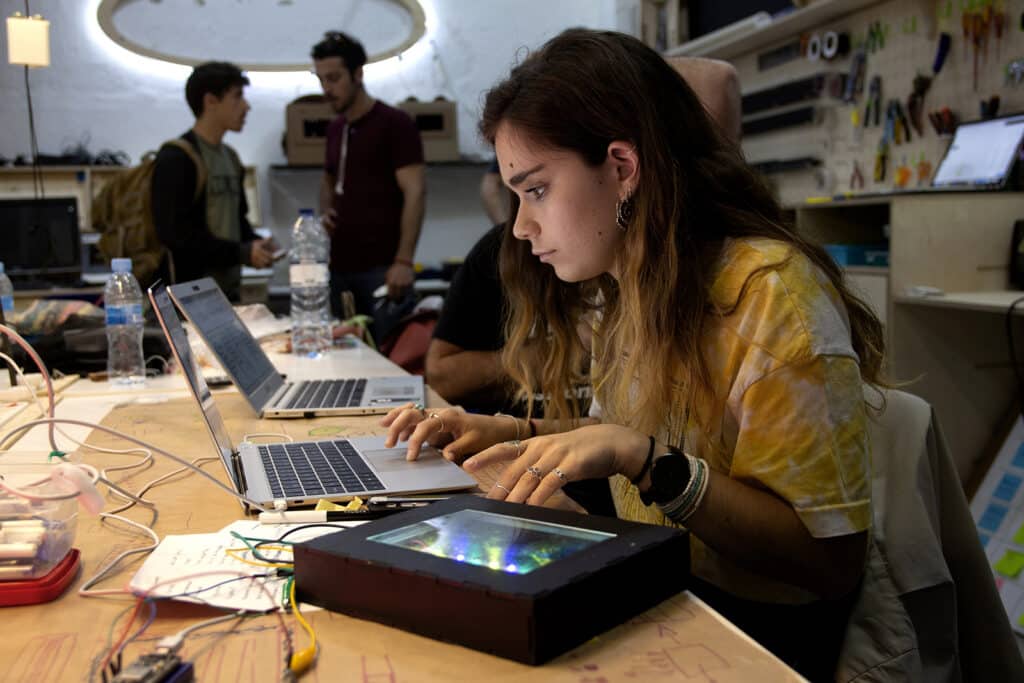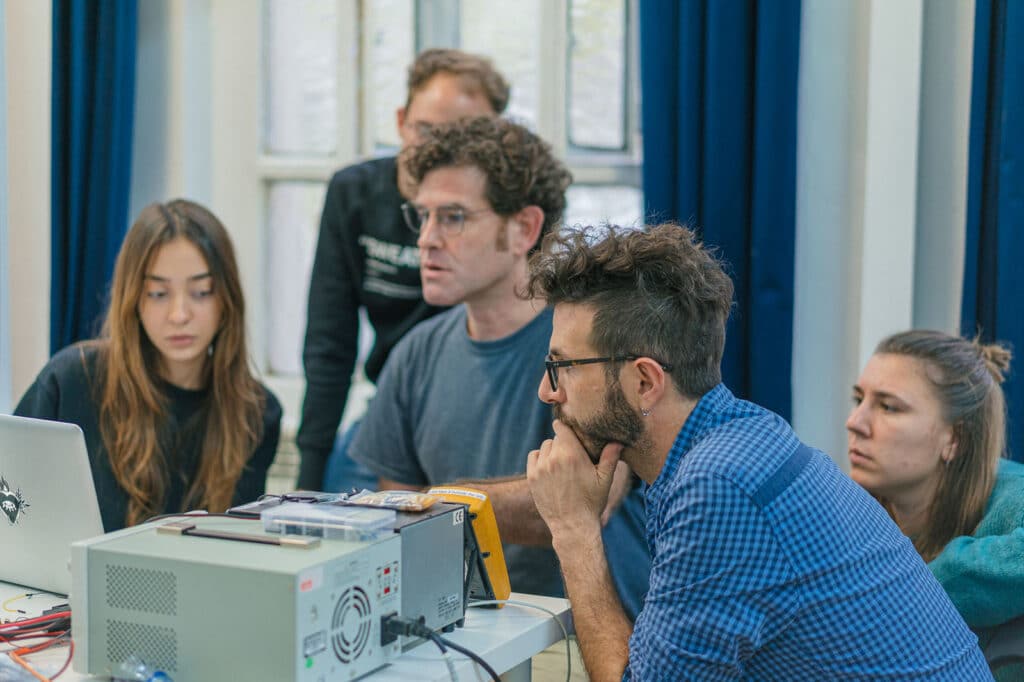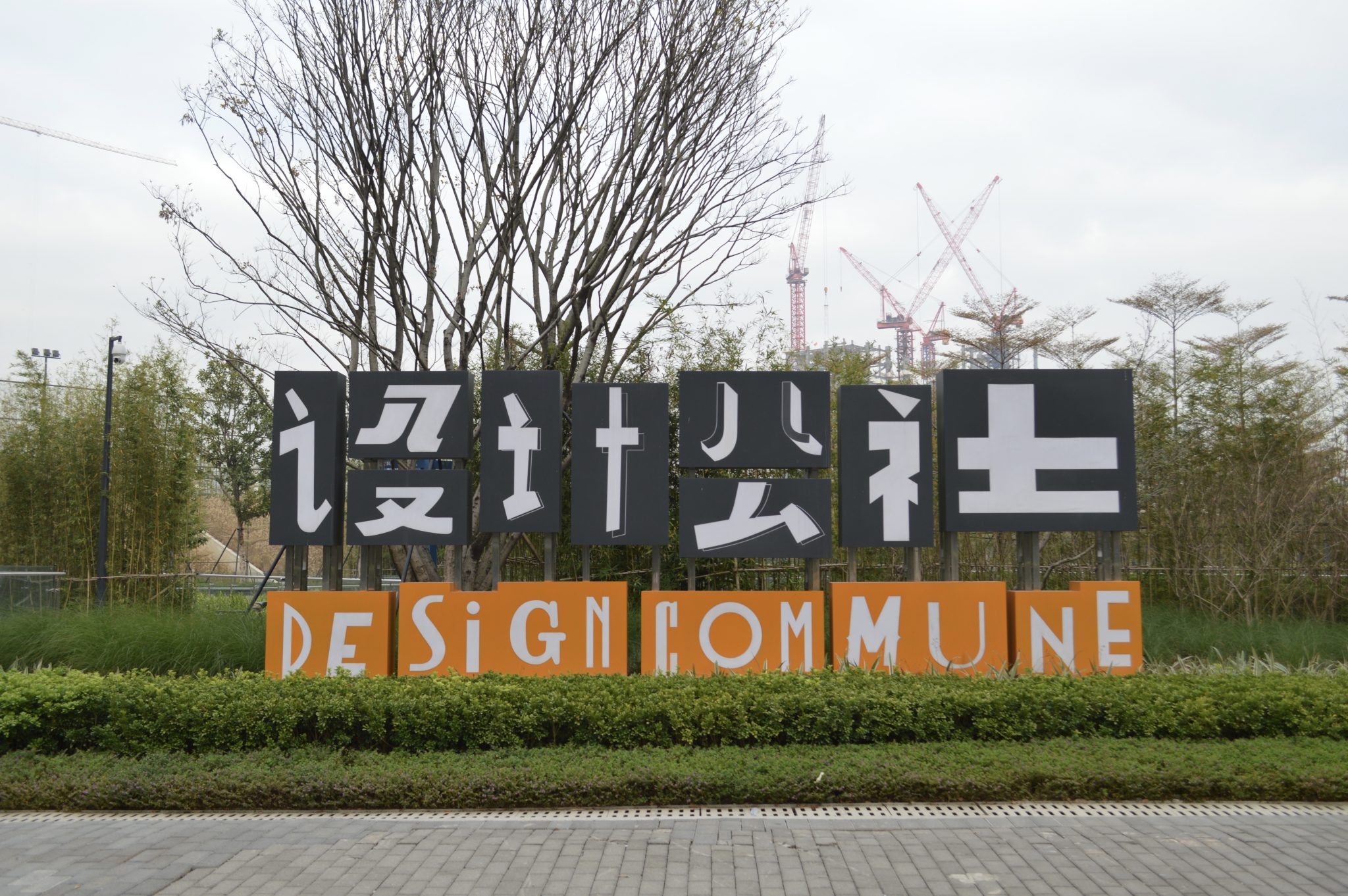
Remote learning? Read the key advice from our educational team
Tools and technologies to introduce into education, learning and research
How is Fab Lab Barcelona navigating the shift to remote learning?
We are now experiencing unprecedented times, however, the longevity and uncertainty of the Coronavirus crisis (2019) mean that we must begin to develop more permanent strategies for working, learning and living remotely. The crisis has made remote learning mandatory for schools, universities, and academies all over the world – including this year’s students of Fab Academy Barcelona, Fabricademy Barcelona, Master in Design for Emergent Futures (MDEF) and even for our European-funded projects, for example, Distributed Design Platform. Fab Lab Barcelona has always followed the Fab City principles of sending bits, not atoms – this can be seen in our distributed learning strategy. The following case studies in this article articulate different methods we are using to run distributed learning as a comprehensive methodology for now, and for futures to come. We asked our distributed educational experts from our Future Learning research area at Fab Lab Barcelona to tell us a little more about some of the projects they are working on.
Developing tools for remote hands-on learning
The Future Learning research team at Fab Lab Barcelona can be seen as experts in the field of distributed and innovative learning. Their strategies, machines and classes have enabled many students during the pandemic to continue learning-by-doing. For example, the team participated in the global movement Frena la Curva with their Jugando con la Luz interactive activity for children. Not only have they been engaging children, but also this year’s Fab Academy Barcelona and the recently graduated Master in Design for Emergent Futures students. Below lists two machines developed by the Future Learning research group at Fab Lab Barcelona. The team designed the SPML Machine and CNC by the Sea. The SPML Machine is otherwise known as the Simple-Personal-Mini-Lab or, the Six-Pack-Mobile Lab. The SPML is an open source mini CNC laser machine the same size as a 6-pack of cans (and only costs around 60 euros to make!) Not only have they designed a fabbable home kit, but also the CNC by the Sea which you can remotely send designs to and watch them appear.
The ‘CNC by the Sea’
The ‘CNC by the Sea’ was set up by the research team at Fab Lab Barcelona for the students to access the machines remotely so that students can continue their hands-on projects remotely. The machine consists of a 3-axis machine modified to draw in a sandbox, in which students could input any design from their homes and view the designs being drawn via two webcam streams. You can see the images of the designs here.
Not only did the students get to watch their designs come to life, but they also learned how to produce custom files and GCODE scripts to run multiple outputs; how to fix the machine remotely by fixing the firmware online and collaborative management of use times by using issues on the GitLab repository.
“We intended to make a collective project with our students remotely, called the ‘CNC by the Sea.’ Students can make a drawing on the sand with a CNC and see the Livestream for 24 hours after. So far, the students have been managing the machine completely on their own and collaboratively taking care of it.”
Eduardo Chamorro, Fab Lab Barcelona
🤙 Open source and replicable – make the CNC by the Sea! This repository contains the instructions, files and code to run the 3-axis machine.
The SPML Machine – Simple-Personal-Mini-Lab
The SPML was created due to the students’ inability to work physically inside Fab Lab Barcelona, and therefore, use the CNC, laser, and other tools. This has enabled students of the Barcelona Fab Academy and Master in Design for Emergent Futures to continue their learning by doing and making from home during this time of uncertainty and for classes in the ‘new normal’. The SPML is a multitool machine that can CNC and laser, is the same size as a six-pack, costs around 60 euros, can all be fabricated within a Fab Lab, and is fully open source!
🤙 Open source and replicable – Make your own SPML machine! Stay tuned – there will be further updates and modifications for this design. This repository contains the instructions, required components, files and code to make the SMPL.
Tools for research
These tools have been developed to be introduced into our wider Circular Makerspace research area. EU project Pop Machina works on the principles of encouraging circular economy practices for an environmental and socio-economical benefit, in which machines such as the SPML and ‘CNC by the Sea’ help participants to learn circular practices through learning-by-doing. This, in turn, socialises and normalises these machines and tools from within the Fab Lab and Fab City framework.
Distributed Design Academy – a fully distributed online course
Each year, Fab Lab Barcelona and Distributed Design Platform produce a summer school. The concept of the Distributed Design Academy this year is around upskilling designers and makers working in digital fabrication and empowering them with a set of tools to help them meet new and emerging markets. The Academy features experts from Precious Plastics, the Royal College of Art, GOMI, Big Impact and the Index Project.
We spoke to Oliver Juggins, a new member to the Fab Lab Barcelona team with an impressive experience of teaching hands-on workshops on topics such as AI and Machine Learning and graduate of the first edition of the Master in Design for Emergent Futures (2018 – 2019) to get an insight into how this year’s Distributed Design Academy will run remotely.
You’ve been helping out with the Distributed Design Academy – what activities are you planning to run with the makers and where are they based?
“The participants are based all over Europe and are connected to the different members of the Distributed Design Platform, so there will be designers from Portugal, Iceland, Hungary and Denmark among others. We are planning a range of activities based around the theme of “makers meeting new and emerging markets” and have five core modules covering areas including business model generation, brand building and communication and making an impact. Each of the five sessions will be formed of three parts: a peer to peer knowledge exchange, guest speaker and an interactive session led by a member of the Fab Lab Barcelona team. The aim is to provide a balance of inspiration and hands-on activities that the participants can then apply to their own project they will work on in small groups.”
What challenges have you had to overcome due to teaching remotely? Or in the case that you haven’t started yet, how are you preparing to teach remotely?
“We have been preparing remote teaching by adapting the methodology that has been developed over the years in the different academies and educational programmes to an online setting. This involves a “learn-by-doing” approach so the challenge is thinking about how the interactive student experience that usually happens in the Fab Lab Barcelona can be maintained in a virtual environment. In preparation, we have been creating a series of guides and recommendations for the different learning experiences and types of classes that will happen and how to use the virtual environment as an opportunity. An example is implementing different synchronous and asynchronous types of communication so that there are clear channels of communication with students and a place for them to get feedback, share ideas and build a community.”
Any tips for teaching remotely?
“I’m still learning what are the best practices and tips! But some initial tips could be having a good setup with an extra monitor, webcam, headphones and microphone and to keep classes short with lots of breaks. Something else I am trying to consider are the aspects of in-person teaching that do not necessarily form part of a traditional class but are still important. As an example, the social interactions between students and instructors in breaks and the chit-chat before a class starts, which are often situations and spaces where students share ideas, form connections and get to know each other. How to create these situations virtually will be a challenge but it’s something that I’ll be testing throughout the year.”
The Master in Design for Emergent Futures
This month also marks the kickoff of the third year of the Master in Design for Emergent Futures. Albeit, this year is starting off on a slightly different note. The MDEF course is now being run via a hybrid digital and physical education space. The online part of the course is running via Mighty Networks, where this year’s graduates held their online exhibition, presentations and informal chat space. The physical element remains based at the Institute for Advanced Architecture Catalonia. The COVID-19 crisis has turned many educational programmes on their head, however, for the Master in Design for Emergent Futures, which teaches students to embrace challenge and chaos, the sudden challenge of COVID-19 was impressively managed. We had a chat with Mariana Quintero, faculty of the MDEF course on how her shift to remote learning has been and key lessons from this special period.
You are faculty of the MDEF course – this is the third year running. How would you say it has changed?
“From the beginning, MDEF was a highly complex but highly exciting exercise in prototyping new paradigms for design education, the design education we wanted to see and felt was urgent for the current status of systemic collapse — one that wasn’t oriented towards finding solutions to product, problem or service briefs anymore, but that placed the designer back into the very socio-technical systems within which he or she was designing, to design for. From there, the students then have to navigate in a shared space of concerns, skills, talents, wills, desires, available resources and materialities, becoming embedded again in the struggle between convenience, needs, and the conflicting paradigms we are experiencing right now on how to inhabit this planet.
This, of course, can be very scary the moment to be a student again. You have to find ways of navigating this level of complexity and not run back to the comfort of designing from the soothing silence of one’s solitary desk and producing self-pleasing renders of how everything should be. Yet at the same time, you start to see yourself in a more honest and responsible way, beginning to find your own voice again as a person, and a designer.
One’s own voice can’t be truly found in isolated renders of reality that win awards. it’ but that it is ultimately completely and unavoidably interdependent, and that actually being far from unpleasing (maybe for the ego, but that’s another story), it can actually create the space of honest connection and meaning you were missing.
I would say this is the aspect that has been slowly maturing the most in the program, in an ever-increasing understanding of how to design this complex intention in the very day-to-day of the classes through methodologies, curricula, courses and exercises, designed by our team or contributed by our amazing constellation of collaborators. Each year we see the results getting better!”
How have the students’ responses to remote learning been?
“Well, 2020 was surely quite a manoeuvre I would say – from the sudden lockdown and the administrative and academic effects of that. Amazingly, these events have actually ended up aligning and accelerating the vision we had been building for the programme since its beginning, which was to build a distributed design programme globally. Of course, we didn’t expect it would happen THAT fast for us, but it did.
Luckily, this is something that has been at the very core of our ecosystem since its formal birth. The first Fab Lab at MIT in Massachusetts emerged almost twenty years ago, born out of the vision to create a distributed education paradigm for the digital fabrication revolution, one which would forever transform how we make almost anything, one which could not make the same mistakes of the previous digital revolutions that left half of the world behind in a huge divide of literacy and access. Responding to a situation where learning had to be adapted to a distributed corpus of students was something that hundreds of people in our ecosystem had already been working on for a long time, it was already in our DNA.
Of course, transitions are not easy. As humans, we respond differently to challenges such as the COVID-19 lockdown in its immense complexity. But, I would say this opened the space for our program and the students to make even more sense out of the vision to move now as designers in a multiscalar design space. The home can be seen as a laboratory, schools and Fab Labs as collective prototyping, socialisation and fabrication spaces, neighbourhoods as testing, learning and prototyping grounds, and ultimately cities and the planet as vast networking, resonance and scalability ground.”
Has shifting to digital means changed your approach as a tutor?
“Yes, definitely, perhaps not the core of it, the ethos of what teaching is for me, but definitely it has pushed me to explore new or overlooked ways to explore what attention means.
Each year I learn and grow personally exploring the dimensions of what it means to be a teacher. Last year I had been thinking a lot about giving your attention – I often feel someone’s attention is the rarest of gifts that can be given nowadays, yet so absolutely important in any learning or teaching process. I was aiming to really listen and engage truly in the student’s processes, a lot of it involved spending time with them, physically, either having coffee or hanging out in my personal studio. After the lockdown happened I had to completely rethink how I wanted to do this. No one wanted to spend more hours on Zoom that needed, everyone’s eyes were already irritated from long screen exposure times and our ability to concentrate was hit by the huge psychological aspect of the situation.
I urgently needed to explore how else I could engage with the students if it couldn’t be under face-to-face or even visual circumstances. I began to experiment with voice, specifically long, asynchronous WhatsApp voice messages or reflections. Students could reflect on any topic and ask questions, in which, I would then reply back with in-depth feedback from their progress. I encouraged them to close their eyes, put on a sleeping mask, and just lay down and listen to my reflections and listen to their own again. I have been amazed by what this learning space can offer. It’s a tool of learning we completely overlook as it can be challenging to lay down and listen without distraction. We’re also not used to this kind of focus – some students would even tell me that they would get anxious and stop – that it was hard to listen. In most cases and for my own reflection purposes, there is something about giving your full attention to someone else’s voice or your own recorded voice that puts you in a very special, giving, empathic and deeply reflective mind space. This experience is very meaningful for learning.
In a nutshell, this has taught me there must be other teaching methodologies I might be overlooking and that I should experiment more. Space we physically share should be not taken for granted and be shared in a more meaningful way – I’m making this my personal challenge as a teacher this year, and I already have some exciting new ideas!”
How do you see education and learning in the future?
“We cannot teach empty words any more. This for one thing.
Abstraction is key to transcend cognitive paradigms of how we know and understand the world and expand the mind into new spaces for understanding. For me, I’m 100% convinced now that embodiment is the key. We cannot abstract from the world any more, we cannot wear academic or professional or antiseptic institutional hazmat suits that protect us from the collapse occurring in front of our eyes. We have to talk to people, test prototypes on ourselves, have labs in our houses, intervene in our neighbourhoods with our family, with our friends, with the feared other, to learn with our whole bodies and our whole experience of reality. I personally believe education right now has to resemble this more and more, has to be fully embodied, even with the paradox of the need to include digital and remote learning in the process.
This is a huge challenge for us who design curricula and learning programs, to reconcile both. I already see that there are amazing possibilities and horizons in globalising shared cognitive spaces whilst localising experience and embodying learning ecosystems. I’m giving my energy to this kind of future.”
Do you think distributed, remote learning will become a permanent strategy for many educational institutions?
“As I said above, I really believe in hybrid models that consider all the scales, from the body to home to planet, interweaving shared global cognitive spaces with localised, fully embodied ecosystemic learning. This is more than just doing remote out of necessity. We’re now entering a completely different chapter which is more expansive and meaningful, and we’re just beginning to understand what it means to learn and inhabit in our complex, wholly interdependent planet.”
Amongst disruptive times, innovation often accelerates. Machine designs, online and distributed educational courses were created out of a necessity for the students to be able to continue their learning whilst remaining safe during the COVID-19 outbreak. Programmes like this have supplied new learning dimensions to the educational space. They provide a hyperconnected learning ecosystem that provides feedback whilst navigating between home, Fab Labs and University. This project reflects how it is possible to learn almost anything in a lab, school or at home, whilst building skills and key competencies to meet social challenges in an uncertain future.
